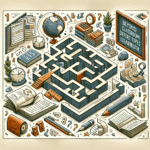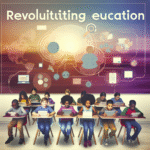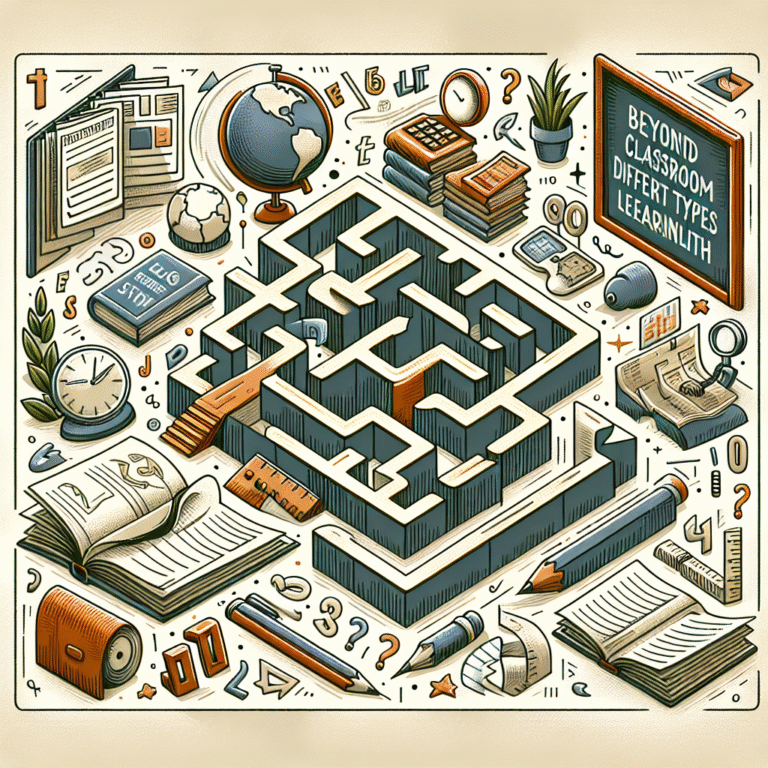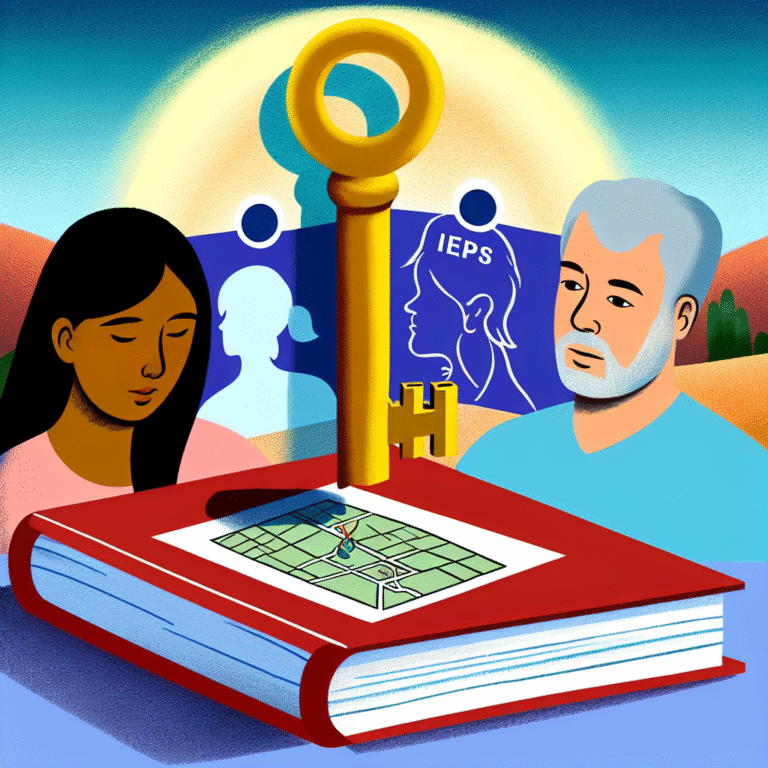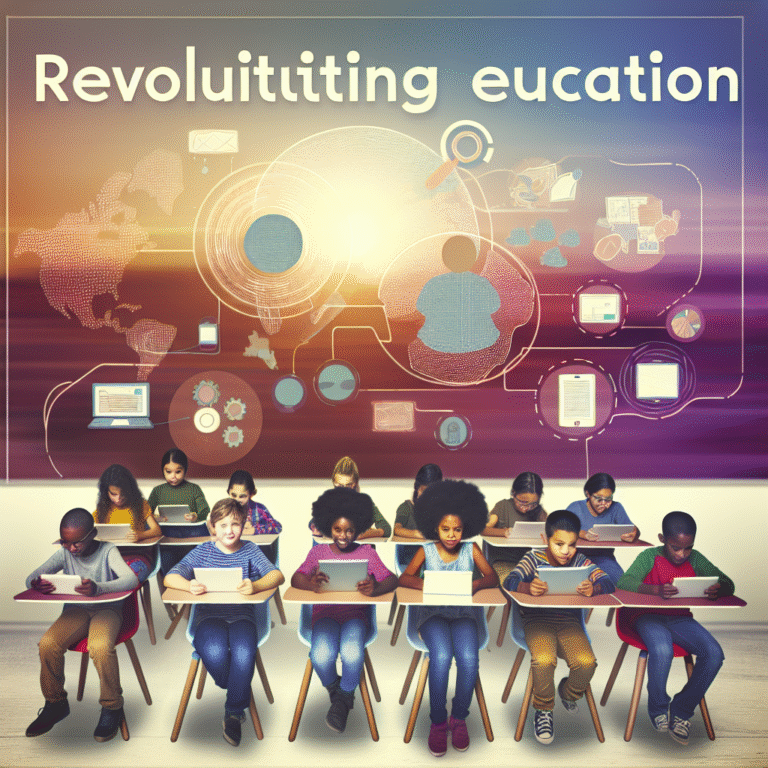
Navigating Challenges: Essential Tools for Improving Organization in Students with Learning Disabilities
Introduction: A Journey Towards Empowerment
In today’s fast-paced educational landscape, students are often inundated with information, experiences, and expectations. For students with learning disabilities, the challenge of navigating this complex environment can feel insurmountable. This article, "Navigating Challenges: Effective Tools for Improving Organization in Students with Learning Disabilities," highlights essential strategies that not only enhance organizational skills but also empower these students to thrive academically and socially.
From managing assignments to utilizing technology, effective tools exist that provide concrete frameworks and support. The journey may be challenging, but with the right resources, students can transform those challenges into opportunities for growth. By the end of this article, we hope to equip families, educators, and students with actionable insights that foster resilience and self-confidence.
Understanding Learning Disabilities and Their Implications for Organization
What Are Learning Disabilities?
Learning disabilities (LDs) encompass a range of disorders that affect how individuals process information. According to the National Center for Learning Disabilities (NCLD), common types of LDs include dyslexia, dysgraphia, and dyscalculia. Each type presents unique challenges that can hinder organizational skills, making effective learning strategies essential.
Case Study: Sarah’s Story
Sarah, a high school student with dyslexia, often struggles to keep track of her assignments and deadlines. She frequently misplaces handouts, which exacerbates her anxiety and impacts her grades. Recognizing these challenges, her teachers collaborated with her to implement tools designed to enhance her organizational skills.
The Importance of Organization for Students with Learning Disabilities
Organization is not just a skill—it’s a lifeline. For students with LDs, the ability to manage time, materials, and tasks can significantly influence their academic success. Unfortunately, without proper organizational tools, many students may feel overwhelmed, resulting in frustration or disengagement from their education.
Tools and Techniques for Organizational Success
1. Visual Supports: Embracing the Power of Graphics
Using Visual Aids
Visual supports, such as charts, color-coded calendars, and checklists, can be instrumental in helping students with LDs. These tools allow for a clear representation of tasks and timelines, making it easier for students to reference information quickly.
Chart: Example of a Color-Coded Calendar
| Day | Subject | Task | Due Date | Notes |
|---|---|---|---|---|
| Monday | Math | Finish worksheet | 10/2 | Review with a tutor |
| Tuesday | History | Read chapter 4 | 10/3 | Highlight key points |
| Wednesday | English | Essay draft | 10/4 | Check for spelling errors |
| Thursday | Science | Lab report | 10/5 | Consult with group |
| Friday | General | Weekly overview | 10/6 | Schedule study session |
Analysis: The Impact of Visual Supports
This chart illustrates the effectiveness of color-coding tasks, which provides students with visual cues that can reduce anxiety and improve focus.
2. Assistive Technology: Leveraging Digital Solutions
In an increasingly digital world, assistive technology has emerged as a powerful ally for students with learning disabilities. Tools such as speech-to-text software, digital planners, and reminder apps help students manage their workload and enhance productivity.
Case Study: Tom’s Tech Transformation
Tom, a middle school student with ADHD, found it challenging to stay organized due to his impulsivity. After introducing him to note-taking and task management apps, he began to utilize reminders and categorize tasks. The shift not only improved his organization but also his overall academic performance.
3. Structured Routines: Establishing Consistency
Creating Daily Routines
Establishing structured routines can offer stability and predictability, which are crucial for students with LDs. Utilizing daily schedules and setting aside dedicated times for specific tasks helps students develop a consistent approach to their studies.
Example of a Daily Routine
| Time | Activity |
|---|---|
| 7:00 AM | Breakfast |
| 7:30 AM | Review notes |
| 8:00 AM | School |
| 4:00 PM | Homework/Study time |
| 5:30 PM | Break/Dinner |
| 6:00 PM | Review assignments |
| 8:00 PM | Prepare for bed |
Analysis: The Role of Routines
This structured approach fosters a sense of security and helps prevent the overwhelm that can come from a chaotic schedule, allowing students to focus more effectively on their assignments.
4. Personalized Goal Setting: Fostering Independence
Setting SMART Goals
Personalized goal setting encourages students to take ownership of their learning. Employing the SMART (Specific, Measurable, Achievable, Relevant, Time-bound) framework allows learners to break down larger tasks into manageable steps, enhancing motivation and clarity.
Example: SMART Goal for Sarah
- Specific: Familiarize myself with the assignment format.
- Measurable: Complete practice essays twice a week.
- Achievable: Dedicate 30 minutes after school.
- Relevant: Improve writing skills for English class.
- Time-bound: Achieve this by the end of the semester.
Analysis: The Impact of SMART Goals
By establishing a clear pathway to success, students find that they can track progress regularly. This increases their confidence and self-motivation, essential elements for long-term organizational success.
5. Collaboration and Support: Building a Network
Engaging with educators, parents, and peers is crucial in the journey of improving organization for students with learning disabilities. Collaborative efforts can lead to effective strategies that resonate with individual needs.
Case Study: The Power of Teamwork
In a pilot program, teachers and families of students with learning disabilities worked together to create tailored organizational strategies. This endeavor led to increased communication at home and school, resulting in a supportive environment during critical learning phases.
6. Mindfulness and Stress Management: Staying Centered
With the pressures of academics, learning to manage stress effectively can also contribute to better organization. Mindfulness practices, such as breathing exercises or short meditation sessions, can help students recalibrate and refocus.
Conclusion: A Path to Empowerment
As we navigate these challenges, understanding and implementing effective tools for improving organization in students with learning disabilities becomes paramount. From leveraging technology to fostering communication and collaboration, each tool plays a vital role in the student’s educational journey.
At the heart of these strategies is empowerment—an essential element that allows students to take control, embrace their strengths, and overcome obstacles. By focusing on organizational skills, we not only enhance academic performance but also nurture resilience and determination that can serve students well beyond the classroom.
FAQs About Organization Strategies for Learning Disabilities
1. How can parents support their child’s organizational skills at home?
Parents can establish routines, utilize visual aids, and encourage the use of planners or apps to help their children manage tasks. Regular check-ins and positive reinforcement can also foster a supportive environment.
2. What are the best assistive technology tools available?
Some effective tools include text-to-speech software (such as Natural Reader), task management apps (like Todoist), and digital note-taking tools (such as Evernote) designed to enhance organization.
3. How can teachers implement organizational tools in the classroom?
Teachers can incorporate visual schedules, flexible seating arrangements, and group activities that promote collaboration. Providing consistent feedback and recognition can bolster the implementation of organizational strategies.
4. Are there specific strategies for exams and test preparation?
Creating a study plan, utilizing practice materials, and engaging in group study sessions can help students manage their time effectively. Teaching relaxation techniques prior to exams can also reduce anxiety.
5. Can organization skills be improved over time?
Absolutely! With practice, patience, and the right tools, students can enhance their organizational abilities. It’s essential to celebrate progress, regardless of how small, to build confidence.
In summary, overcoming the challenges associated with learning disabilities begins with a concerted effort to improve organization. With the right tools and strategies, students can fully engage in their educational journey, transforming potential obstacles into stepping stones for a successful future.
